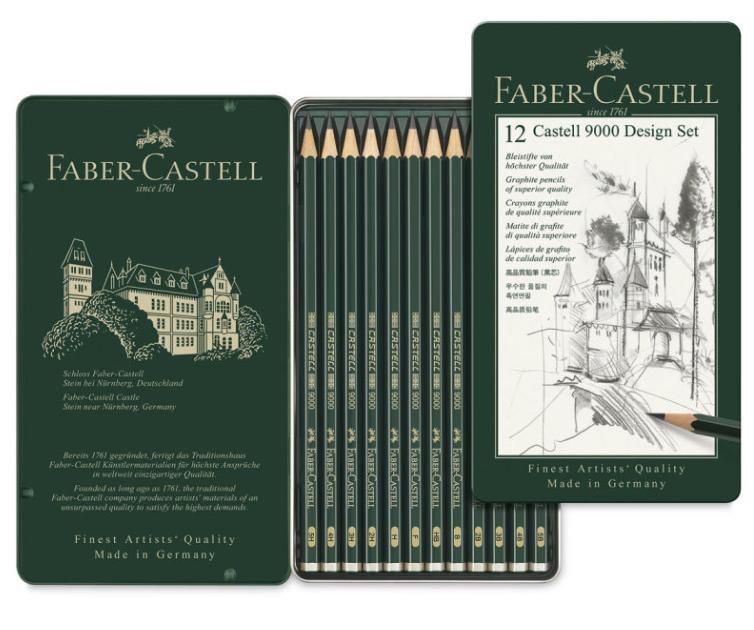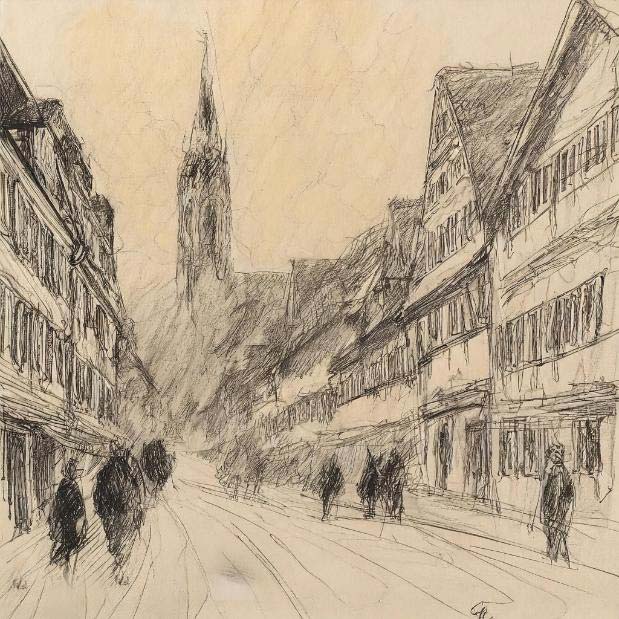Sketching is a fundamental practice in the art world, involving the creation of quick, loose drawings to capture basic shapes, forms, and ideas. It serves as the backbone for more detailed artworks and helps artists refine their concepts.
Essential Sketching Supplies
- Pencils: Ranging from hard (H) to soft (B) grades, providing a variety of lines and textures.
- Paper: Often lighter weight, with sketchbooks being a popular choice for portability and convenience.
- Erasers: Include kneaded erasers for precision and rubber erasers for general use.
- Sharpeners: Ensure your pencils are always ready for fine lines and details.
- Pens: Fine liners and ballpoint pens offer permanent marks for more confident lines.

Techniques in Sketching
Different techniques can enhance your sketching skills and bring variety to your work.
- Hatching and Cross-Hatching: Create texture and depth by drawingDrawing is a foundational art form that involves creating images on a surface, typically paper, using tools such as pencils, pens, and charcoal. It is a versatile medium that allows artists to express ideas, emotions, and stories through lines, shapes, and shading. Historical Background • Prehistoric Beginnings: The earliest known drawings date back to prehistoric times, with cave drawings found More parallel lines or intersecting lines.
- Stippling: Use dots to build up shading and texture.
- Blending: Smooth transitions between light and dark areas using fingers, blending stumps, or tissues.
- Gesture DrawingDrawing is a foundational art form that involves creating images on a surface, typically paper, using tools such as pencils, pens, and charcoal. It is a versatile medium that allows artists to express ideas, emotions, and stories through lines, shapes, and shading. Historical Background • Prehistoric Beginnings: The earliest known drawings date back to prehistoric times, with cave drawings found More: Quick, fluid sketches that capture the essence and movement of a subject.
- Contour DrawingDrawing is a foundational art form that involves creating images on a surface, typically paper, using tools such as pencils, pens, and charcoal. It is a versatile medium that allows artists to express ideas, emotions, and stories through lines, shapes, and shading. Historical Background • Prehistoric Beginnings: The earliest known drawings date back to prehistoric times, with cave drawings found More: Focus on the outline of a subject to improve your observational skills.

Benefits of Sketching
Sketching offers numerous benefits for artists of all levels.
- Improves Observation: Enhances your ability to see and capture details in the world around you.
- Boosts Creativity: Encourages experimentation and the development of new ideas.
- Builds Confidence: Regular practice leads to improved skills and confidence in your artistic abilities.
- Relaxation: Provides a calming and meditative experience, reducing stress.
Common Sketching Subjects
Sketching can involve a variety of subjects, each presenting unique challenges and opportunities.
- Figures: Capturing the human form, gestures, and expressions.
- Landscapes: Depicting natural scenes, including trees, mountains, and water bodies.
- Still LifeStill Life refers to a genre of art that focuses on depicting inanimate objects. These objects are typically commonplace items, arranged in a composition to highlight their shapes, colors, textures, and forms. The genre is known for its attention to detail and the meticulous arrangement of elements, creating a sense of balance and harmony. Historical Background Still life painting has More: Arranging and sketching objects like fruit, flowers, and everyday items.
- Architecture: DrawingDrawing is a foundational art form that involves creating images on a surface, typically paper, using tools such as pencils, pens, and charcoal. It is a versatile medium that allows artists to express ideas, emotions, and stories through lines, shapes, and shading. Historical Background • Prehistoric Beginnings: The earliest known drawings date back to prehistoric times, with cave drawings found More buildings, bridges, and other structures, focusing on perspective and detail.
Tips for Effective Sketching
- Start Light: Begin with light, loose lines to map out the composition before adding details.
- Use References: Draw from life or use photos to improve accuracy and detail.
- Practice Regularly: Consistency is key to improving your skills.
- Experiment: Try different tools, techniques, and subjects to expand your repertoire.
- Stay Patient: Progress takes time, so be patient and enjoy the learning process.
Historical Significance of Sketching
Throughout history, sketching has played a crucial role in the development of art.
- Leonardo da Vinci: Known for his detailed sketches of anatomy, inventions, and observations.
- Michelangelo: Used sketching to plan his sculptures and paintings, showcasing his mastery of the human form.
- Van Gogh: Created numerous sketches that provided insights into his creative process and development.

Digital Sketching
With the advent of technology, digital sketching has become increasingly popular.
- Tablets and Styluses: Devices like the iPad and Wacom tablets offer powerful tools for digital sketching.
- Software: Programs like Procreate, Adobe Fresco, and Sketchbook provide a wide range of brushesBrushes are indispensable tools for artists, used to apply paint, create textures, and define details. With a wide range of shapes, sizes, and materials available, understanding the different types of brushes and their uses can significantly enhance an artist's work. Definition and Composition • Brush: An artist's tool made up of a handle, a ferrule (the metal part that connects More and effects.
- Flexibility: Digital sketching allows for easy editing, undoing mistakes, and experimenting with different styles.
Sketching Exercises
Incorporate these exercises into your routine to improve your skills.
- Blind Contour DrawingDrawing is a foundational art form that involves creating images on a surface, typically paper, using tools such as pencils, pens, and charcoal. It is a versatile medium that allows artists to express ideas, emotions, and stories through lines, shapes, and shading. Historical Background • Prehistoric Beginnings: The earliest known drawings date back to prehistoric times, with cave drawings found More: Draw the outline of a subject without looking at your paper to enhance hand-eye coordination.
- Timed Sketches: Set a timer for short intervals to practice quick, decisive drawingDrawing is a foundational art form that involves creating images on a surface, typically paper, using tools such as pencils, pens, and charcoal. It is a versatile medium that allows artists to express ideas, emotions, and stories through lines, shapes, and shading. Historical Background • Prehistoric Beginnings: The earliest known drawings date back to prehistoric times, with cave drawings found More.
- Copying Masters: Study and replicate sketches by renowned artists to understand their techniques.
Resources for Learning Sketching
- Books: Titles like “DrawingDrawing is a foundational art form that involves creating images on a surface, typically paper, using tools such as pencils, pens, and charcoal. It is a versatile medium that allows artists to express ideas, emotions, and stories through lines, shapes, and shading. Historical Background • Prehistoric Beginnings: The earliest known drawings date back to prehistoric times, with cave drawings found More on the Right Side of the Brain” by Betty Edwards offer foundational skills and techniques.
- Online Tutorials: Platforms like YouTube and Skillshare provide step-by-step guidance for various sketching methods.
- Classes: Local art schools and community centers often offer sketching courses.
Famous Sketchbooks
Some artists’ sketchbooks have become legendary, providing a glimpse into their creative minds.
- Leonardo da Vinci: His sketchbooks reveal his insatiable curiosity and genius in multiple fields.
- Frida KahloFrida Kahlo (1907-1954) was a Mexican painter known for her deeply personal and symbolic works. Her art, characterized by vibrant colors and a unique blend of realism and surrealism, explores themes of identity, pain, and cultural heritage. Kahlo's work has gained worldwide recognition, making her one of the most celebrated artists of the 20th century. Early Life and Influences Born More: Her sketchbooks showcase her emotional depth and unique style.
- Egon SchieleAustrian painter Egon Schiele (1890 – 1918) was one of the leading figures of Austrian Expressionism. He is famous for his fluid drawing style depicting twisted and distorted bodies and raw sexuality. As early as in his teenage years, his formidable talents fully matured as a protégé of Gustav Klimt. In 1907, Klimt had become Egon’s mentor and they developed More: Known for his expressive and raw figure sketches, Schiele’s sketchbooks offer a deep insight into his artistic process.
URLs:
You might also enjoy reading the following posts by Pigment Pool:
25 Facts to Know About Egon Schiele: Klimt, Women, and Austrian Expressionism
A Brief History of Colour Pigments
The Art of Hanging Art: How to Follow and Break Rules
Ultimate Guide to the Best Colored Pencils – Must-Know Facts for Hobbyists and Artists
The Best Acrylic Paint Set for Artists and Hobbyists In 2024
The Best Art Markers for Hobbyists and Professionals in 2024
M.C. Escher Art Work: 19 Fascinating Insights into His Life and Creations
This article may contain compensated links. Please read Disclaimer for more info. As an Amazon Associate, I earn from qualifying purchases.
